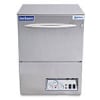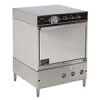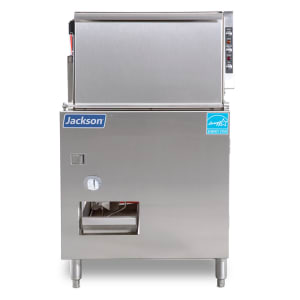Commercial Undercounter Dishwashers
Undercounter dishwashers provide commercial operations with quick dish cleaning capabilities in a compact footprint and are especially popular behind bars and in kitchens where space is at a premium. Most undercounter models can wash both dishes and glasses but a few are optimized specifically for glassware. More

Use 180 degree F water to sanitize and clean completely without chemicals. These may require separate booster heater purchase.

Use chemical sanitizers, providing lower utility and HVAC demand. These will require a contract with a chemical company.
Undercounter dishwashers come in two varieties. While high-temp models use extremely hot water to kill germs and sanitize dishes, low-temp models rely on chemical sanitizers to accomplish this. Both types of commercial undercounter dishwasher effectively clean dishes, but there are varied requirements for each option.
A low-temp machine can typically be connected directly to existing plumbing, though the operator must keep a supply of cleaning chemicals on hand to use the machine; some users also report a faint chemical smell left behind on dinnerware and glasses. A high-temp undercounter dishwasher doesn't need soap or sanitizers to operate, but it will likely require a water temperature booster to ensure the water reaches the 180 degrees Fahrenheit needed to efficiently kill germs and bacteria. The super-heated wastewater produced by these machines must be cooled before it can be drained into municipal systems, so some models have a built-in cooling system for that purpose.
Restaurateurs should also consider the machine's operating capacity when choosing an undercounter commercial dishwasher. This capacity is measured by how many filled dishracks the machine can clean in an hour – most capacities fall somewhere between 20 and 40 racks per hour. Determine the number of racks you need to clean during peak hours and choose a model that can handle that level of demand. A few commercial under-the-counter dishwashers designed specifically for glassware operate with a rotating conveyor belt instead of racks, and output is measured by the total number of glasses the unit can clean in an hour.

